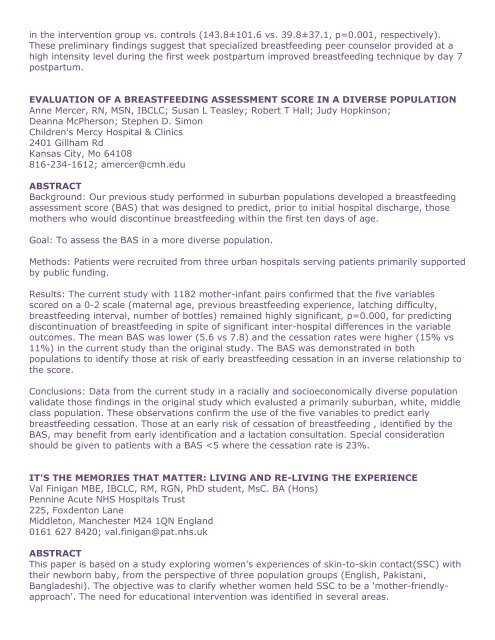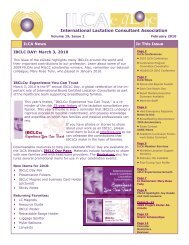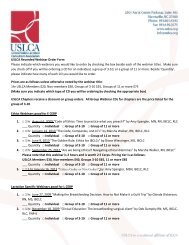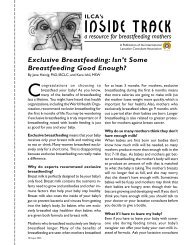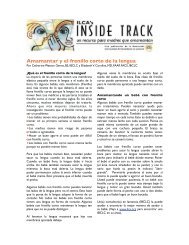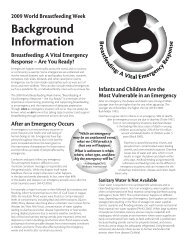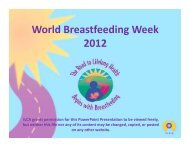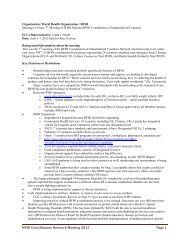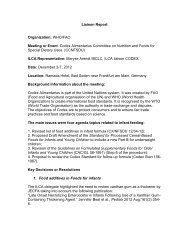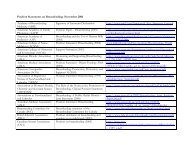2010 - International Lactation Consultant Association
2010 - International Lactation Consultant Association
2010 - International Lactation Consultant Association
You also want an ePaper? Increase the reach of your titles
YUMPU automatically turns print PDFs into web optimized ePapers that Google loves.
in the intervention group vs. controls (143.8±101.6 vs. 39.8±37.1, p=0.001, respectively).<br />
These preliminary findings suggest that specialized breastfeeding peer counselor provided at a<br />
high intensity level during the first week postpartum improved breastfeeding technique by day 7<br />
postpartum.<br />
EVALUATION OF A BREASTFEEDING ASSESSMENT SCORE IN A DIVERSE POPULATION<br />
Anne Mercer, RN, MSN, IBCLC; Susan L Teasley; Robert T Hall; Judy Hopkinson;<br />
Deanna McPherson; Stephen D. Simon<br />
Children's Mercy Hospital & Clinics<br />
2401 Gillham Rd<br />
Kansas City, Mo 64108<br />
816-234-1612; amercer@cmh.edu<br />
ABSTRACT<br />
Background: Our previous study performed in suburban populations developed a breastfeeding<br />
assessment score (BAS) that was designed to predict, prior to initial hospital discharge, those<br />
mothers who would discontinue breastfeeding within the first ten days of age.<br />
Goal: To assess the BAS in a more diverse population.<br />
Methods: Patients were recruited from three urban hospitals serving patients primarily supported<br />
by public funding.<br />
Results: The current study with 1182 mother-infant pairs confirmed that the five variables<br />
scored on a 0-2 scale (maternal age, previous breastfeeding experience, latching difficulty,<br />
breastfeeding interval, number of bottles) remained highly significant, p=0.000, for predicting<br />
discontinuation of breastfeeding in spite of significant inter-hospital differences in the variable<br />
outcomes. The mean BAS was lower (5.6 vs 7.8) and the cessation rates were higher (15% vs<br />
11%) in the current study than the original study. The BAS was demonstrated in both<br />
populations to identify those at risk of early breastfeeding cessation in an inverse relationship to<br />
the score.<br />
Conclusions: Data from the current study in a racially and socioeconomically diverse population<br />
validate those findings in the original study which evalusted a primarily suburban, white, middle<br />
class population. These observations confirm the use of the five variables to predict early<br />
breastfeeding cessation. Those at an early risk of cessation of breastfeeding , identified by the<br />
BAS, may benefit from early identification and a lactation consultation. Special consideration<br />
should be given to patients with a BAS


